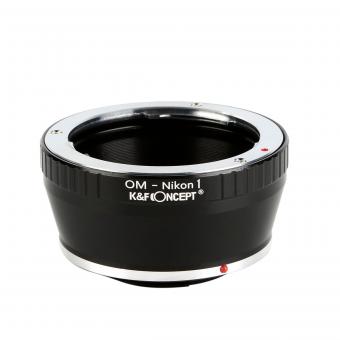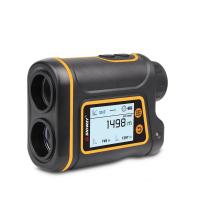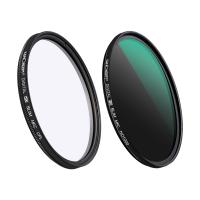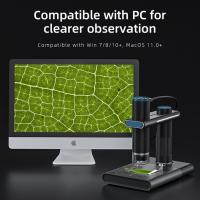Why Do Forensic Scientists Use Microscopes ?
Forensic scientists use microscopes to examine and analyze trace evidence found at crime scenes. Microscopes allow them to magnify and study small particles, such as fibers, hair, glass fragments, or paint chips, which may provide crucial information in solving a crime. By using microscopes, forensic scientists can observe the physical characteristics, composition, and structure of these microscopic pieces of evidence, helping them identify their origin or match them to a specific source. Microscopic analysis can also reveal details like tool marks, fingerprints, or biological materials, aiding in the identification of suspects or victims. Overall, microscopes are essential tools in forensic science as they enable scientists to uncover valuable evidence that may not be visible to the naked eye.
1、 Examination of trace evidence
Forensic scientists use microscopes for the examination of trace evidence because it allows them to analyze and identify minute details that are not visible to the naked eye. Trace evidence refers to small, often microscopic, pieces of physical evidence that can be transferred between individuals or objects during a crime. This can include fibers, hair, glass fragments, paint chips, gunshot residue, and even biological materials like blood or semen.
Microscopes provide forensic scientists with the ability to magnify these trace materials, enabling them to observe their characteristics, composition, and structure. By examining these details, forensic scientists can make important connections between the evidence and the crime scene, suspects, or victims. For example, they can determine the type of fiber present, match it to a specific fabric, and link it to a suspect's clothing or the crime scene.
Moreover, microscopes allow forensic scientists to conduct further analysis on trace evidence. They can perform tests such as spectroscopy, which helps identify the chemical composition of a substance, or DNA analysis, which can provide crucial information about the individuals involved in a crime.
In recent years, advancements in microscopy technology have further enhanced the capabilities of forensic scientists. For instance, scanning electron microscopes (SEM) and atomic force microscopes (AFM) provide higher resolution and three-dimensional imaging, allowing for more precise analysis of trace evidence. Additionally, techniques like Raman spectroscopy and infrared microscopy have become valuable tools for identifying substances and analyzing their molecular structure.
In conclusion, forensic scientists use microscopes for the examination of trace evidence because they provide the necessary magnification and resolution to observe and analyze minute details. These microscopic examinations play a crucial role in linking evidence to crime scenes, suspects, and victims, ultimately aiding in the investigation and resolution of criminal cases.
2、 Analysis of microscopic structures
Forensic scientists use microscopes for a variety of reasons, primarily for the analysis of microscopic structures. Microscopes allow forensic scientists to examine evidence at a level of detail that is not visible to the naked eye. This level of magnification is crucial in identifying and analyzing trace evidence, such as fibers, hairs, glass fragments, paint chips, and even biological materials like blood and semen.
Microscopic analysis provides valuable information about the origin, composition, and characteristics of these trace materials. For example, the shape, color, and size of a fiber can help determine its source, whether it is from clothing, carpeting, or upholstery. Similarly, the morphology of a hair can provide insights into its species, whether it is human or animal, and potentially even the individual it came from.
Furthermore, microscopes enable forensic scientists to examine tool marks and firearms evidence. By studying the microscopic features of tool marks left at a crime scene or on a victim, forensic scientists can potentially match them to a specific tool or weapon. Similarly, microscopes are used to analyze the striations on fired bullets and cartridge cases, aiding in the identification of firearms used in a crime.
In recent years, advancements in microscopy technology have further enhanced the capabilities of forensic scientists. For instance, scanning electron microscopes (SEM) and atomic force microscopes (AFM) allow for three-dimensional imaging and analysis of surfaces at the nanoscale. This level of detail can provide even more precise information about the composition and structure of evidence, aiding in the identification and differentiation of materials that may be visually similar.
In conclusion, forensic scientists use microscopes for the analysis of microscopic structures to gather crucial information about trace evidence, tool marks, and firearms evidence. The advancements in microscopy technology have expanded the capabilities of forensic analysis, allowing for more accurate and detailed examinations.
3、 Identification of biological materials
Forensic scientists use microscopes for a variety of reasons, with one of the primary purposes being the identification of biological materials. Microscopes allow forensic scientists to examine and analyze microscopic evidence, such as hair, fibers, blood, and other bodily fluids, which can provide crucial information in criminal investigations.
Microscopic analysis plays a vital role in identifying the source of biological materials found at crime scenes. For example, by examining the characteristics of a hair sample under a microscope, forensic scientists can determine whether it belongs to a human or an animal, and potentially even identify the individual it came from. Similarly, the examination of bloodstains under a microscope can reveal important details such as blood type, presence of DNA, and potential injuries or diseases.
Advancements in microscopy technology have further enhanced the capabilities of forensic scientists. For instance, the development of high-resolution microscopes allows for more detailed analysis of minute features, enabling the identification of even smaller traces of biological materials. Additionally, techniques such as fluorescence microscopy and electron microscopy have expanded the range of substances that can be detected and analyzed.
Moreover, microscopes are not only used for identification but also for the comparison of samples. By comparing the microscopic characteristics of different samples, forensic scientists can determine if they originate from the same source, potentially linking a suspect to a crime scene or connecting different crime scenes together.
In conclusion, forensic scientists use microscopes primarily for the identification of biological materials. The latest advancements in microscopy technology have significantly improved their ability to analyze microscopic evidence, providing valuable information in criminal investigations. Microscopic analysis continues to be an essential tool in forensic science, aiding in the pursuit of justice and the resolution of criminal cases.
4、 Detection of chemical substances
Forensic scientists use microscopes for a variety of reasons, one of which is the detection of chemical substances. Microscopes allow forensic scientists to examine trace evidence at a microscopic level, enabling them to identify and analyze various substances that may be crucial to a criminal investigation.
Microscopic analysis is particularly important in cases involving drugs, poisons, and other chemical substances. By using microscopes, forensic scientists can identify and characterize the composition of these substances, which can provide valuable information about their origin, purity, and potential effects. This information is essential for determining the presence of illegal drugs, identifying unknown substances found at crime scenes, and linking suspects to specific substances.
Moreover, microscopes enable forensic scientists to examine trace evidence such as fibers, hair, and glass fragments. These tiny pieces of evidence can often provide crucial links between a suspect and a crime scene. Microscopic analysis allows scientists to compare the characteristics of these trace materials with known samples, helping to establish connections and provide evidence in court.
In recent years, advancements in microscopy technology have further enhanced the capabilities of forensic scientists. For example, the development of scanning electron microscopes (SEM) and transmission electron microscopes (TEM) has allowed for higher resolution imaging and the ability to analyze samples at the nanoscale. This has opened up new possibilities for forensic analysis, such as the identification of nanoparticles, gunshot residue, and even the analysis of DNA at the single-cell level.
In conclusion, forensic scientists use microscopes, including advanced microscopy techniques, for the detection of chemical substances and the analysis of trace evidence. These tools play a crucial role in identifying and characterizing substances, linking suspects to crime scenes, and providing valuable evidence in criminal investigations. The continuous advancements in microscopy technology further enhance the capabilities of forensic scientists, allowing for more accurate and detailed analysis in the pursuit of justice.

























